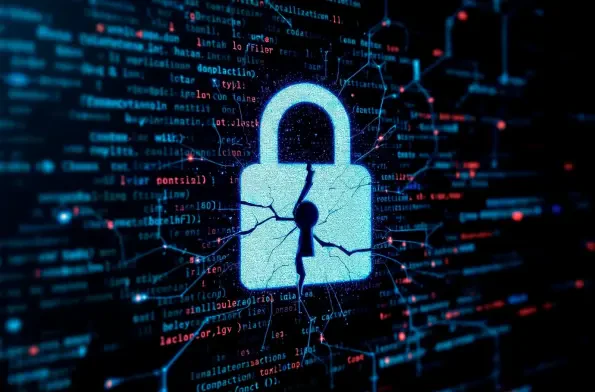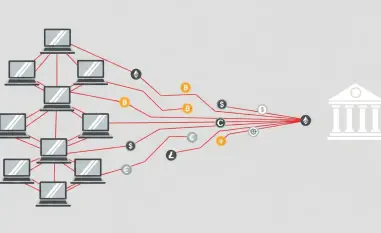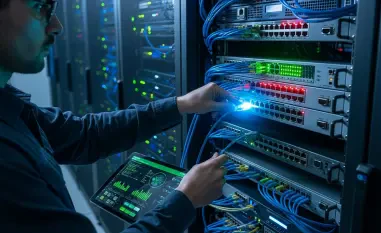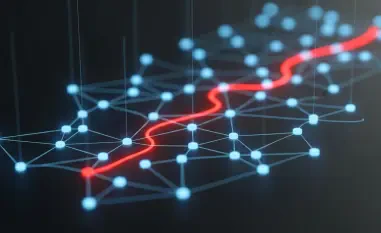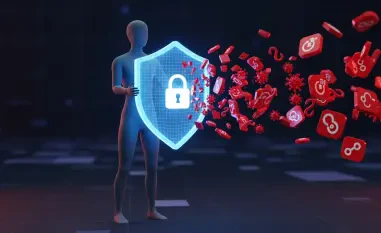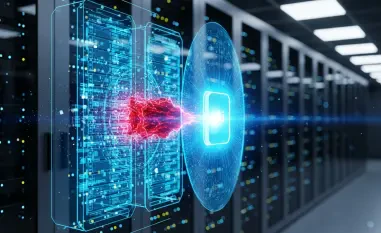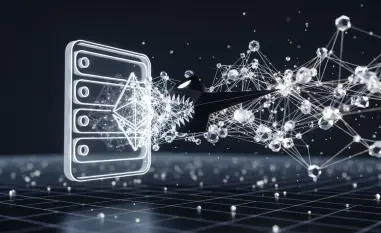Malik Haidar is a renowned expert in cybersecurity, recognized for his profound understanding of threats posed by hackers and sophisticated espionage groups. His work with multinational corporations has earned him a reputation for seamlessly integrating business perspectives into robust cybersecurity strategies. Today, Malik offers insights into the cyber-espionage activities conducted by APT28, a formidable group linked to Russian intelligence agencies. As we delve into the intricacies of this ongoing digital conflict, we explore how targeted nations, including France, navigate these cyberspace challenges while securing their assets and maintaining strategic resilience.
Can you provide an overview of the cyber-espionage campaign that the Russian group APT28 has been accused of conducting against France?
APT28, often associated with the Russian GRU, has been accused of running a sophisticated and stealthy cyber-espionage campaign against France. Over the past four years, this group has targeted a range of French entities to gather strategic intelligence. Their activities are not just focused on data theft; they aim at broader destabilization, impacting not only France but also other regions and sectors globally.
Which specific French entities were targeted or compromised by APT28, and over what timeframe did these attacks occur?
The cyber-attacks orchestrated by APT28 have compromised at least 12 French entities over the last four years. These include entities from a wide array of sectors such as government, defense, aerospace, finance, and NGOs. Their reach extends beyond France, as they’ve also impacted other EU countries, NATO members, and Ukraine since 2021, underscoring the widespread implications of their operations.
What are the strategic objectives behind APT28’s cyber-espionage activities against French entities?
APT28’s strategic objectives hinge on gathering intelligence that is pivotal for military and geopolitical purposes. They seek details that can offer Russia leverage in international negotiations or bolster their geopolitical strategies. Additionally, these actions seem designed to sow discord within foreign states and influence public opinion, further destabilizing regions as witnessed during the 2017 French elections.
Can you explain the connection between APT28 and the Russian GRU?
APT28 is widely believed to be a hacking group closely linked to the Russian GRU, Russia’s military intelligence agency. This affiliation suggests that their cyber operations may be state-sponsored, aligning with the strategic interests of Russia. This connection implies a degree of sophistication and resources available to APT28, which are not typically present in independent hacking groups.
How has France responded to the cyber-attacks attributed to APT28?
France has taken a firm stance against these cyber threats, publicly condemning the actions attributed to APT28. The Ministry for Europe and Foreign Affairs has issued statements denouncing the group’s activities, emphasizing the unacceptable nature of these attacks, particularly from a UN Security Council member like Russia. France is also collaborating with allies to develop strategies for discouraging and responding to these hostile cyber actions.
What measures is France taking to deter future cyber-attacks from APT28 or similar groups?
France is actively deploying cybersecurity measures to shield itself from future attacks. This includes enhancing cyber defenses, investing in advanced technology to detect and intercept threats, and fostering international collaborations to bolster collective security against such cyber campaigns. They aim to anticipate and mitigate malicious cyberspace behavior to safeguard national interests.
Could you elaborate on APT28’s alleged actions during the 2017 French elections and the Paris Olympics?
During the 2017 French elections, APT28 allegedly aimed to interfere with the democratic process, potentially seeking to sway public opinion or disrupt election infrastructure. Similarly, the group reportedly targeted entities involved with the Paris Olympics, aiming to create havoc or access valuable intelligence. Such actions highlight their intent beyond mere data theft, focusing on a broader agenda of societal destabilization.
How do France’s allies support its efforts to counter such cyber threats?
France’s allies contribute significantly by sharing intelligence, expertise, and resources. Collaborative defense strategies and information-sharing networks are vital, enabling more effective detection and response to cyber threats. This united front among allied countries is crucial for countering and preventing further incursions by groups like APT28.
What guidelines or norms does the United Nations have about state behavior in cyberspace?
The United Nations advocates for responsible state behavior in cyberspace, urging nations to uphold peace, security, and cooperation online. These guidelines emphasize avoiding interference in the internal affairs of other states and protecting critical information infrastructure. Nations are encouraged to adopt these norms to maintain stability and security in the global digital environment.
Can you discuss the findings of the French cybersecurity agency ANSSI regarding APT28’s activities?
ANSSI’s reports have detailed APT28’s comprehensive approach to cyber-espionage. They highlight the group’s tactics, which revolve around exploiting vulnerabilities, conducting phishing campaigns, and leveraging brute-force methods. ANSSI’s findings emphasize the strategic depth and global reach of APT28’s operations, underscoring its persistent threat to cybersecurity across various sectors.
What are some of the sectors and regions targeted by APT28, according to the ANSSI report?
According to ANSSI, APT28 has a broad targeting spectrum, focusing on sectors like government, defense, aerospace, finance, and NGOs. Moreover, their activities are not confined to French borders; they extend to other European nations, NATO members, and Ukraine. This prevalent threat requires robust international cybersecurity alliances to counter effectively.
What specific tactics, techniques, and procedures (TTPs) does APT28 use in its cyber operations?
APT28 employs a range of sophisticated TTPs, including phishing, exploiting zero-day vulnerabilities like CVE-2023-23397, and brute-force attacks. They strategically target webmail interfaces and insecure edge devices, aiming for initial access. Once inside, their focus shifts to harvesting intelligence from emails, accessing conversations, and extracting login credentials, which are key to their espionage strategy.
Could you explain more about the vulnerabilities that APT28 exploits, like the CVE-2023-23397 zero-day?
APT28 frequently exploits vulnerabilities like CVE-2023-23397, which is a zero-day flaw allowing them to gain unauthorized access to systems before vendors can issue a patch. This tactic enables precursory infiltration into networks, offering them a conduit to subsequently deploy more intricate attack vectors, often without immediate detection.
How does APT28 gain initial access to their targets’ systems?
To gain initial access, APT28 typically employs phishing techniques and exploits vulnerabilities within webmail services and poorly secured edge devices such as routers and firewalls. This strategic initial infiltration allows them to maneuver within networks, facilitating further assaults and the exfiltration of valuable intelligence.
What are some of the methods APT28 uses to harvest intelligence from email accounts?
APT28 targets email accounts with precision, extracting valuable intelligence by accessing conversations, address books, and login credentials. They often exploit email server vulnerabilities and utilize these details to map networks and escalate operations strategically while maintaining a stealthy presence inside compromised systems.
Can you tell us about the infrastructure APT28 uses to conduct its cyber operations?
APT28’s infrastructure is notably outsourced, relying on rented servers, free hosting, VPN services, and temporary email creation services. This approach provides operational flexibility and enhances their ability to remain undetected, often blending their traffic with legitimate activities, which complicates detection.
How does APT28’s use of readily available services complicate their detection and monitoring?
By employing services that are widely accessible and often legitimate, APT28 cleverly masks their operations in regular internet usage patterns. This reliance on common infrastructure makes their malicious activities challenging to differentiate from typical network traffic, creating significant obstacles for security teams tasked with detection and monitoring.
In what ways might APT28’s activities be considered a threat to global cybersecurity?
APT28 represents a formidable threat to global cybersecurity due to its capability, reach, and state backing. Their operations can disrupt critical infrastructure, manipulate political processes, and destabilize societies, posing challenges that go beyond national boundaries and demand coordinated international response strategies.
How are other EU countries, NATO members, and Ukraine being impacted by APT28’s activities?
APT28’s activities have palpable effects across EU nations, NATO allies, and Ukraine, with notable disruptions in government and critical infrastructure sectors. Their widespread campaigns necessitate collaborative cybersecurity efforts among impacted countries, reinforcing defenses and sharing intelligence to counteract the group’s pervasive influence.
What challenges do cybersecurity teams face in detecting and countering the infrastructure used by groups like APT28?
Cybersecurity teams face daunting challenges in combating APT28 due to the group’s adeptness at blending their infrastructure with legitimate services, rendering detection complex. This stealthy approach demands cutting-edge tools, meticulous analysis, and international collaboration to identify, track, and mitigate their sophisticated network of operations effectively.
What is your forecast for the evolving nature of cyber threats like those posed by APT28?
The evolution of cyber threats, exemplified by groups like APT28, is likely to continue towards increased sophistication and deeper integration with geopolitical objectives. As technology advances, these threats will become more nuanced, necessitating proactive, dynamic cybersecurity strategies and heightened global cooperation to protect critical infrastructure and maintain international stability.
